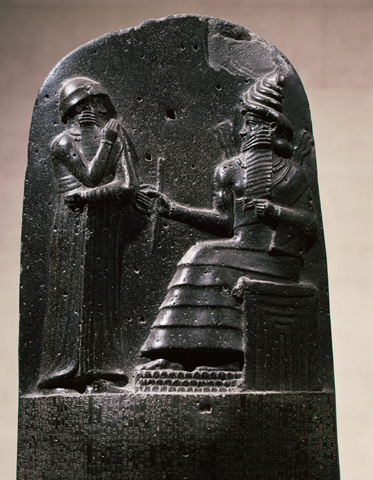The Code of Hammurabi, c. 1760 BCE
“An eye for an eye and a tooth for a tooth.”
The Code of Hammurabi treats only a small portion of the legal material; it is a collection of reform laws that were probably appended to long-established legal cases. In this respect, none of the legal collections is systematically ordered; cases of penal, civil, trade and work law alternate with one another. Most of the laws are formulated casuistically and begin in Sumerian with tukumbi, “if,” in Akkadian with šumma, and in Hittite with takku. Thus, “If a man has committed robbery, he will be killed.” By contrast, the apodictic formulation typical of religious laws (as, for example, the Ten Commandments) is a rare exception- for example, “A prostitute is not permitted to veil herself; her head must remain bare.” The tariff cases found in Old Babylonian laws are similarly formulated.
Excerpted from Wolfram von Soden, The Ancient Orient; An Introduction to the Study of the Ancient Near East, Grand Rapids- William B. Eerdmans Publishing Co., 1994.
Payment for Doctors
If a physician make a large incision with an operating knife and cure it, or if he open a tumor (over the eye) with an operating knife, and saves the eye, he shall receive ten shekels in money.
If a physician heal the broken bone or diseased soft part of a man, the patient shall pay the physician five shekels in money.
Malpractice
If a physician make a large incision with the operating knife, and kill him, or open a tumor with the operating knife, and cut out the eye, his hands shall be cut off.
Lex Talionis – Law of Retaliation
“An eye for an eye, a tooth for a tooth.”
196- If a seignior has destroyed the eye of a member of the aristocracy, they shall destroy his eye.
200- If a seignior has knocked out a tooth of a seignior of his own rank, they shall knock out his tooth.





